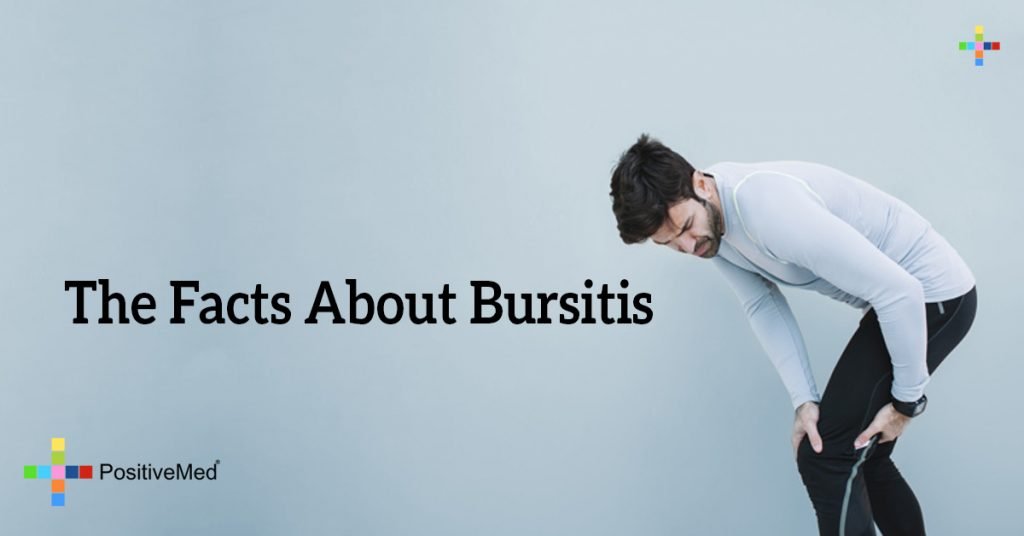
The bursa is a sac-like membrane near a joint that serves as a cushion between muscle and bone. Without bursa, the friction caused by moving would be painful and greatly reduce flexibility. When the bursa becomes inflamed, known as bursitis, it can be incredibly painful.

Bursitis is common and can occur when a joint is overused, however, it can also be caused by gout or an infection. Bursitis is more common in diabetics, the elderly, or those who are overweight, but it can occur in anyone, even young, healthy people.
Some of the symptoms of bursitis include pain around the joints (hip, knee, elbow, shoulder) particularly if pressure is applied to the area. There can be redness or swelling, but that is typically indicative of an infection and is a less common symptom. Those with symptoms of bursitis often think they have arthritis. Unlike arthritis, those with bursitis have healthy joints and will get better with time.
The best way to heal bursitis is to immediately ice the joint and rest. There is no need to stop all activities, but it may be best to avoid the activity that triggered the problem, at least for a few days. It is a good idea to take anti-inflammatory drugs such as ibuprofen, aspirin, or naproxen to reduce inflammation and relieve discomfort. If there’s an infection, antibiotic therapy will also come into play. If the pain is intense or does not improve within a short period, a doctor might inject a corticosteroid directly into the area. These can be damaging, so physical therapy, including ultrasound treatments, may be the treatment of choice and is usually helpful.
Sometimes, bursitis occurs repeatedly in the same joint, and the affected bursa may need to be removed surgically, this, however, is rare. Surgery may also be needed if there’s an infection in the bursa that is not alleviated by antibiotics. There are some natural, homeopathic ways to treat bursitis, for example, Native Remedies suggests herbs such as turmeric, boswellia, and white willow which have excellent anti-inflammatory properties.
Glucosamine, which is available in tablets, is naturally manufactured by the body and this substance is found in relatively high concentrations in joints and connective tissues, its function is to repair cartilage and maintain joint mobility. Remember to always check your natural supplements and remedies are sourced from reputable companies for maximum safety and effectiveness.
Doctor Weil says that in addition to relaxing the joint, to apply DMSO (dimethyl sulfoxide), a chemical made from wood pulp that penetrates the skin and promotes healing of inflammation. Use a 70% solution of DMSO and apply it to the affected area with absorbent cotton, allowing it to dry. Apply the solution three times a day for three days. If you don’t see improvement, stop use. If you do notice improvement, cut back to twice a day for three more days, then once a day for a final three days. After that, your body can continue healing on its own.
DMSO can cause a sensation of warmth or stinging and may give an odd, garlic-like taste in the mouth. There’s no cause for concern about either of these reactions. DMSO will also dissolve synthetic fibers, so be careful not to get it on clothing or upholstery. DMSO can be found at most health food stores. Dilute 100 percent or 90 percent solutions down to 70 percent with distilled water. The mixture will get hot – allow it to cool before using.
If there’s significant pain or swelling near or in a joint, contact your doctor. If you have been diagnosed with bursitis and the pain is not getting better, contact your doctor – there may be other treatment options available or the pain may be caused by something else.

An ounce of prevention is worth a pound of cure, so try to prevent bursitis from developing or hinder its return by avoiding repetitive motion of a joint. Losing weight may reduce the risk of developing bursitis in the hip or knee. If repeated stress on a joint cannot be avoided, such as those whose jobs require squatting or kneeling for extended periods of time, protective gear such as knee pads can help. Work-related bursitis, or bursitis that occurs with certain athletic activities, can be avoided by using alternative techniques.
Bursitis typically lasts for a short time and improves drastically and quickly with therapy, however, a few people may be bothered for a longer period of time. Even then, however, bursitis hardly, if ever, leads to permanent hindering of the function of a joint or a disability.





